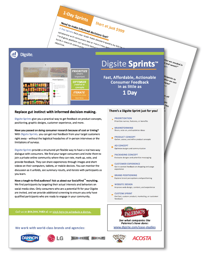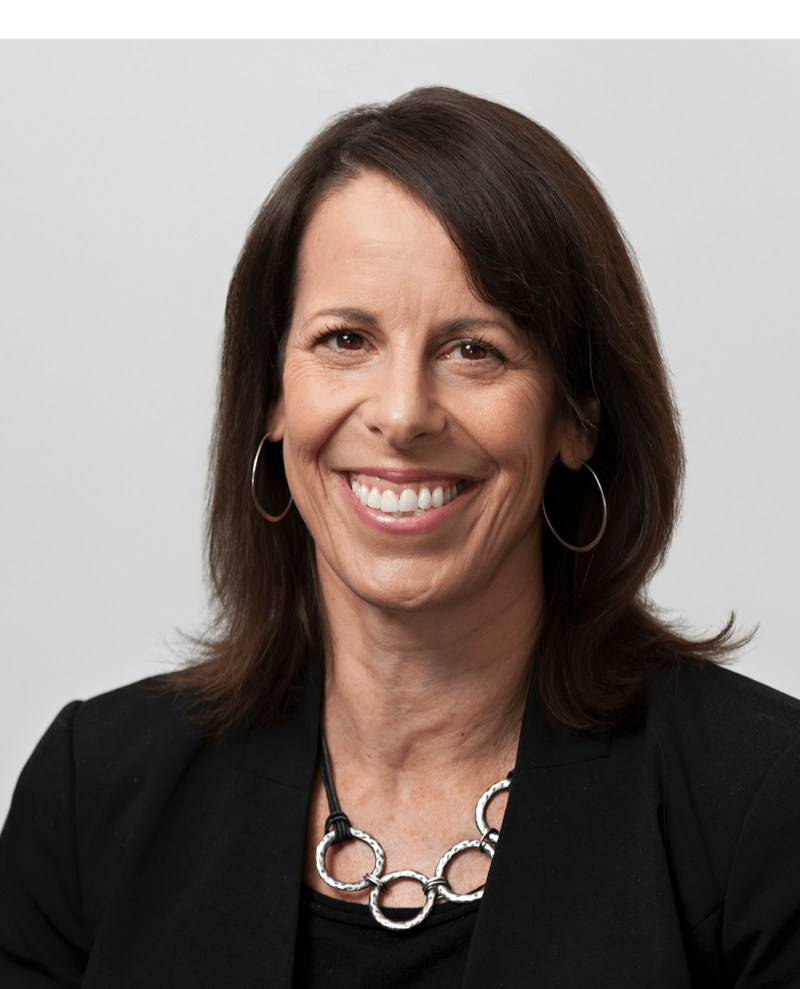.png)
Do marketers in the beverage industry really understand who millennials are and how they react? It’s not easy if their decisions are based on the conventional wisdom. That’s why this qualitative research report on millennials’ real-world decision-making is proving so valuable. (Note: This is the first of a 3-part series “Marketing Health to Millennials.”)
Before we delve into the market research results, let’s review some of the marketing research that’s been conducted to date on millennials. You’ll get a sense of why so many beverage marketers are so unsure about their next step.
Want a quick copy of the report? Get one here!
Why are Millennials so Important?
A millennial is anyone born roughly between approximately 1980 - 2000. The advertising agency Barkley @barkleyus notes there are “80 million members of the millennial generation (born 1977 to 1995) and represents 25% of the US population and more than $200 billion in annual buying power.”
As Barkly notes in their report “American Millennials: Deciphering the Enigma Generation,” that makes this generation “larger than the Baby Boomers (born 1946 to 1964) and three times the size of Generation X (1965-1976).”
Is it Generation We or Generation Me?
The size of the Millennials is easy to quantify, but their psyche is a different story, especially when you consider the conflicting research.
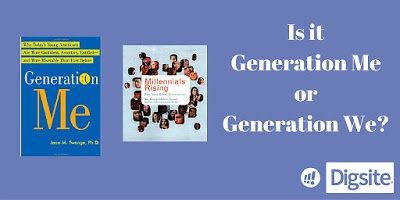
Initially, books such as Millennials Rising, by Neil Howe and William Strauss, classified the Millennials as closely resembling the World War II generation. Defined as Generation Y, they were characterized as being more civic-minded, and thought to have a strong sense of community - both locally and globally.
However, researchers such as Dr. Jean Twenge thought otherwise. She considers Millennials to be part of “Generation Me” (also the name of her book), and noted a sense of narcissism and entitlement.
Finally, to add to the confusion, further studies, such as this one by IBM’s business consulting arm, questioned whether either classification - Generation Me or Generation We - was necessarily true.
When Faced With Real Contradictions, Turn to the Real World
No wonder beverage marketers are perplexed as how to position products and services to this extremely important marketplace.
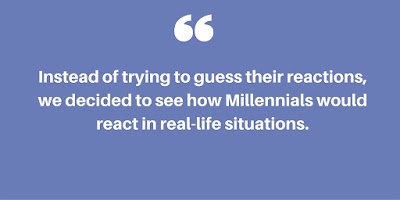
In two separate studies (we’ll reveal findings from the second one in an upcoming post), we conducted qualitative market research with millennials on real-world consumer decisions. The first one, which we’ll detail here, was on Beverages.
(We’ll reveal findings from the second study in an upcoming post, so be sure to subscribe to our blog.)
We used a Digsite Sprint, which is an online qualitative research tool, to gauge their reactions to beverages in today’s marketplace. We also studied their reactions to an actual ad campaign from two different companies.
Activity 1 - Share Your Beverage Experience: “What’s in the Fridge?”
Digsite Sprints are held over a period of 1-5 days, and include surveys and exercises designed to produce qualitative results. The Digsite Sprint takes place online, in an interface that resembles familiar social media. Participants are recruited through social media to participate.
You can either run the Digsite Sprint yourself, or choose a marketing researcher to run it for you.
When we launched Digsite, we wanted to encourage the participants to share personal information and interact. This is a bonding exercise for the group, but it also gave us some perspective on their thoughts and behaviors.
For the first activity, we asked participants for some screenshots of the drinks they had on hand. They uploaded some photos taken of their refrigerators into the Digsite community.
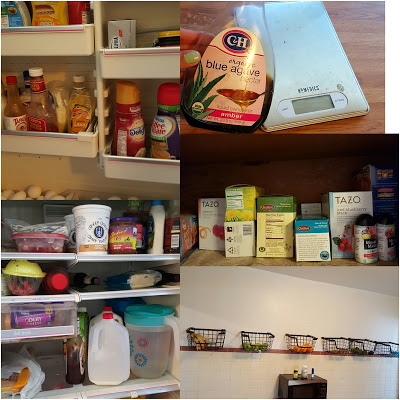
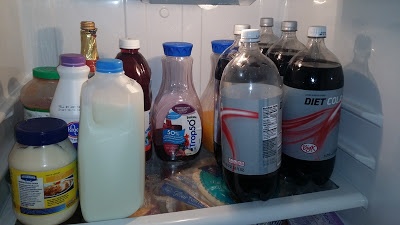
We also asked survey questions about their recent experience with a bottled beverage. For example, “What was the most recent healthy bottled drink you consumed?” The survey results indicated bottled water was the #1 choice.
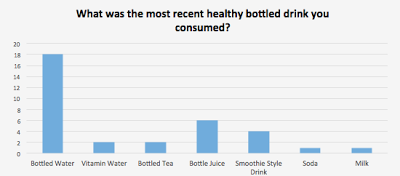
Tallying the results of this and other survey questions, we looked for similarities in the responses, so we could draw some conclusions. We generated a number of Key Takeaways.
Key Takeaway #1: Millennials Will Pursue a “Healthier Option,” but Also Want Taste
Of the participants that indicated water as their most recent beverage of choice, 50% of them indicated that they chose this because it was a “healthier option.” Concerns for high levels of sugars also influenced their choice; however, even with the need for a “healthy option,” Millennials are still unwilling to completely sacrifice taste.
View the report to see the full results of Activity 1.
Activity #2 - Beverage Preferences: “I Wish Upon a Bottle”
In Activity 2, we wanted to identify the Millennials’ preferences when it comes to a healthy bottled beverage.
The first part of Activity 2 is called the “I wish” task. Participants were asked to think about a recent situation where they were less than delighted with a beverage choice.
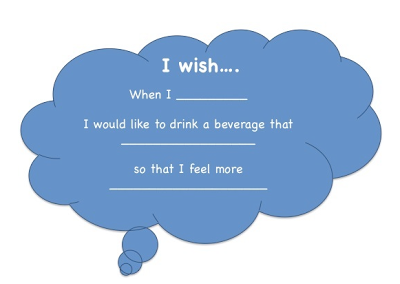
Some notable “I wish” comments:
“Vitamin water: I wish it tasted better than it does. I would love to drink it if it tasted good.”
“I wish my carbonated water stayed carbonated longer than one hour.”
“I wish that when I take long hikes, I would like to drink a beverage that is not too sugary but still has flavor so that I feel more hydrated.”
In the second part of Activity 2, participants were asked to submit some new ideas for beverage enhancements. Some notable comments included:
-
Contains green vegetables
-
Contains raw fruits or vegetables
-
Naturally low in sugar and calories
-
Fairtrade certified
-
Sold in an insulated stay-cool bottle
We also asked why participants wanted these particular attributes. Some answers included:
“I would like to support local farmers and have the most benefits of raw fruits that I can.”
“I need more sustained energy throughout the day.”
Key Takeaway #2: Sugars Aren’t a Turn Off, Just Want Less
Millennials are not totally opposed to sugars since they contribute to taste, but they are conscious of high levels of sugars in drinks.
View the report to see the full results of Activity 2.
Activity 3 - Beverage Reviews: Ad Campaigns Go Head-2-Head
In this activity, we conducted reviews of two new beverages - Dust Cutter and Protein 20. The beverages packaging was presented, as well as print advertising.
Participants were asked to submit + or - symbols directly onto our online Whiteboard and show what they liked and what they didn’t like. Here are what the + and - images look like after a participant review.
Ad Concept #1: Protein 20
Before Review
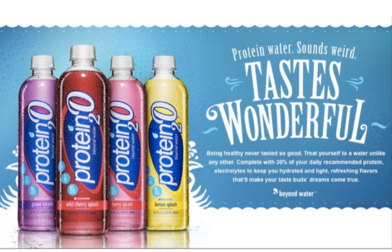
After Review
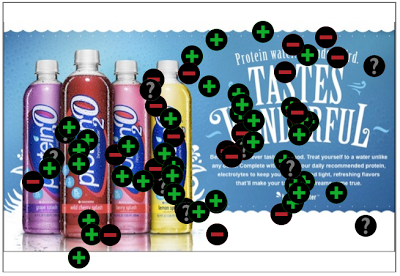
Ad Concept #2: Dust Cutter
Before Review
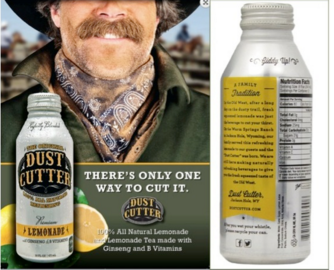
After Review
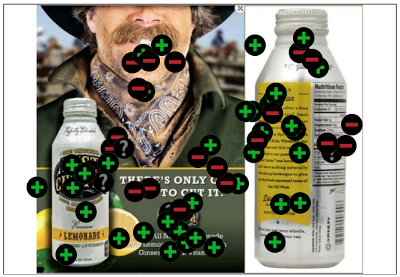
After the participants left a number of comments, we then asked them two questions. Which concept was their favorite, and which made “natural” claims that were believable?
The response was very interesting. It was virtually a tie between the two options.
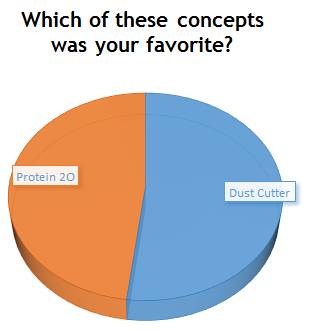
However, the respondents felt strongly that the “natural claims” made by Dust Cutter Lemonade were clearly more believable.
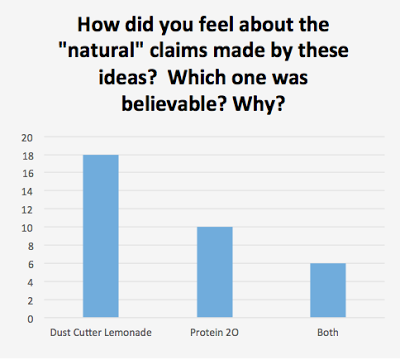
We then asked what, if anything, do you think brands should do to be more clear about their health claims? Comments included:
“Put their protein or other ingredient sourcing as well as where they get their ingredients, such as country of origin or region.”
“They should show packaging and where their farms are so consumers can look into their background more.”
“I think they need to be more clear about how the drink is made. The ingredients, and the nutrients that are in it.”
Key Takeaway #3: Transparency is Key to Earning Millennial’s Trust
Millennials are aware that they are being marketed to, and therefore are inherently wary. Millennials want to be assured by data that claims are what they say they are.
View the report to see the full results of Activity 3.
Activity #4 - Ideal Packaging Concept: “Made by Millennials”
The online interface of Digsite Sprints allows for some creative approaches to qualitative research. In Activity 4, instead of relying on Madison Avenue to generate marketing ideas, we turned the Millennials loose.
We asked them to create their own packaging for a beverage, and include the essential elements. We also asked them to explain their concepts, detailing what was important and why. Here’s a sample, with the verbatim comments:

Key Takeaway #4: “Organic” is not as Important as “Natural”
This particular takeaway was surprising. Millennials commented that “Organic” typically means that the price will be raised and they were not willing to pay for it. More important were “non gmo” and “all natural.”
View the report to see the full results of the Activity 4.
Some Important Notes About Qualitative Online Research
We’ve given you plenty of interesting qualitative research findings from the Digsite, and we’d like to leave you with some food (or beverage?) for thought:
1. Why these takeaways are accurate: While qualitative research does not have the statistical confidence of quantitative research, we use methods like triangulation to draw reliable conclusions.
In this case, we found many instances where millennials agreed on questions about beverage choices, and we feel confident in the findings.
2. Why they’re important to beverage marketers: In our last post, Prof. Niraj Dawar (@nirajdawar) noted that marketers need to focus more on downstream activities. You need to find the things that make it easier for consumers to buy.
In conducting this Digsite Sprint, we were able to move away from general trends and tendencies and instead focused “downstream,” where millennials are actually making real-world decisions.
3. Anyone can generate the kind of qualitative data we’ve produced here. If you’re interested in seeing the complete results,please click here to download the report.
More importantly, know that any marketer can use Digsite Sprints to deliver similar results for their own marketing efforts.
EDIT: Part 2 of our 3-part study is now available! See what Millennials look for in household products & brands in our latest blog post.
To learn more about how your company can benefit from iterative research, check out our Digsite Sprints Fact Sheet!
